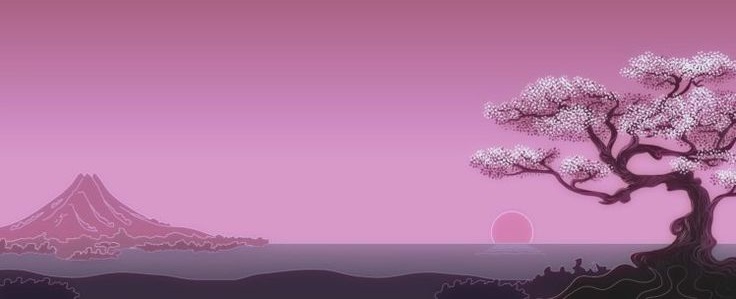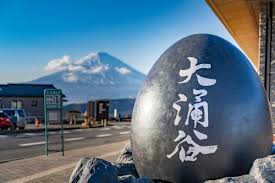
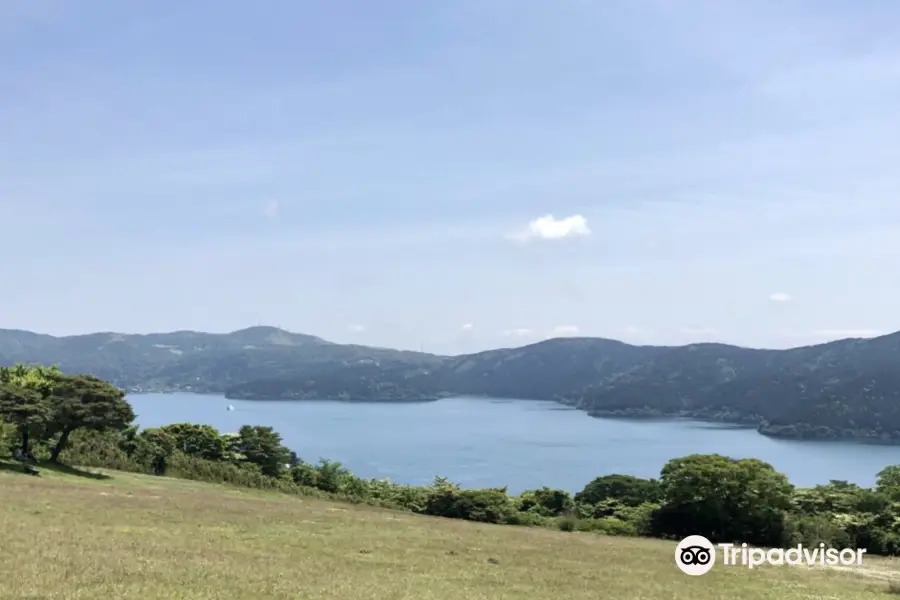
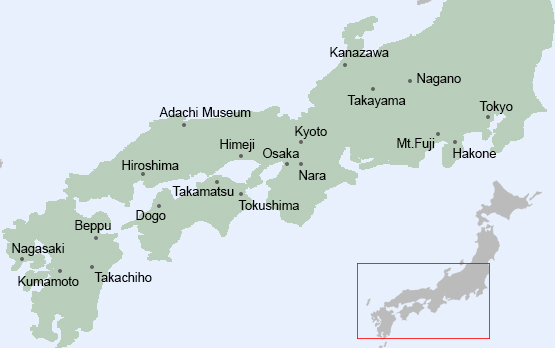
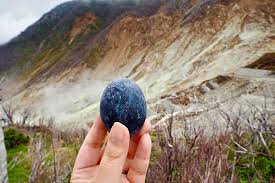
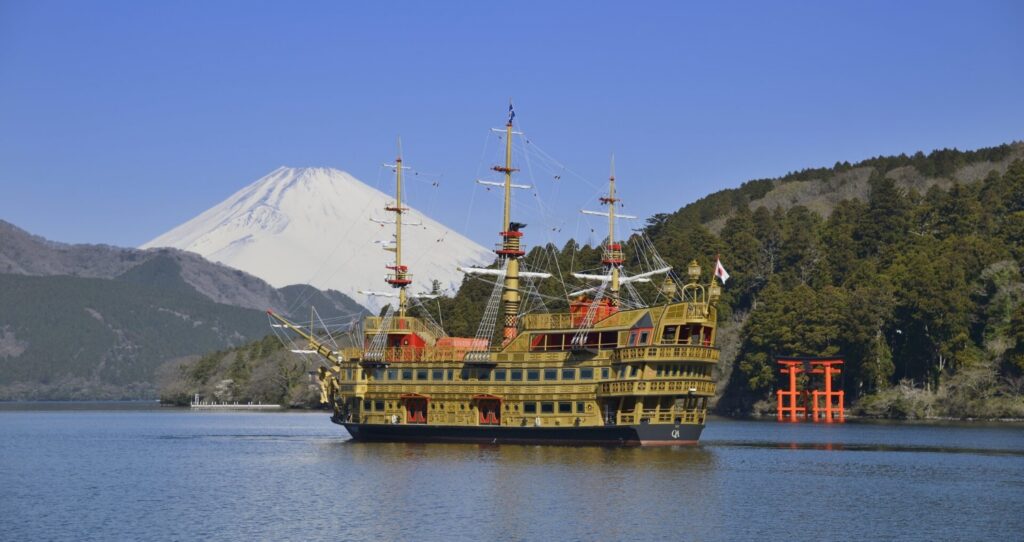
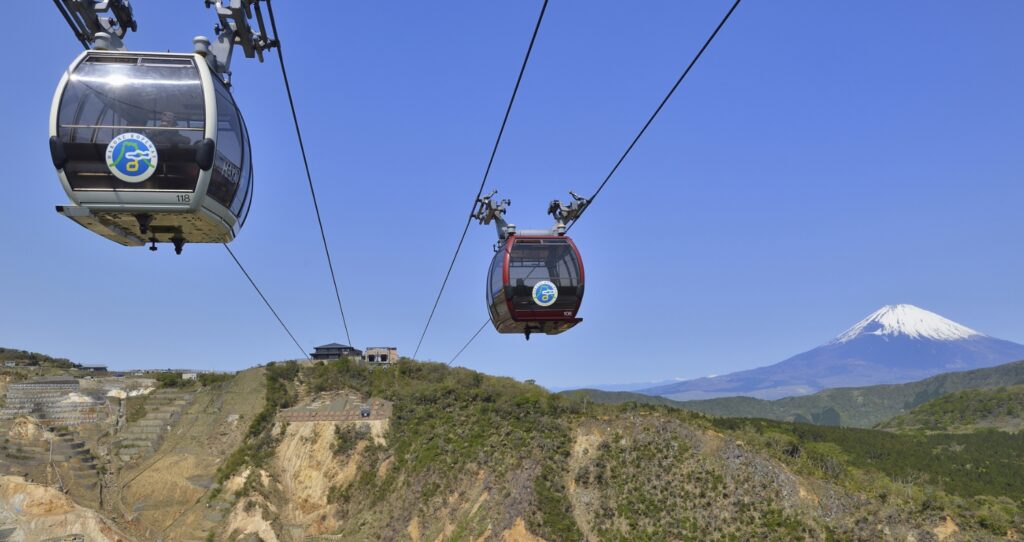
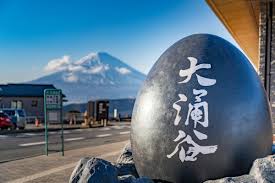
Hakone is a picturesque region located in Kanagawa Prefecture, Japan, renowned for its natural beauty, hot springs, and cultural attractions. It’s part of the Fuji-Hakone-Izu National Park and is a popular destination for both locals and international travelers seeking relaxation and scenic views. Here’s a closer look at what makes Hakone special:
Natural Beauty
- Mount Fuji Views:
- On clear days, Hakone offers stunning views of Mount Fuji, especially from spots like Lake Ashi and the Hakone Ropeway. The combination of the lake, volcanic landscapes, and Mount Fuji creates a dramatic and picturesque backdrop.
- Lake Ashi (Ashi-no-ko):
- A serene lake formed by volcanic activity. It’s famous for its scenic boat cruises on the pirate-themed ships, which offer panoramic views of the surrounding mountains and forests.
- Owakudani (Valley of Hell):
- A volcanic valley known for its sulfuric fumes, hot springs, and volcanic activity. The area features striking landscapes and is home to the famous black eggs, which are boiled in the natural hot springs.
Cultural and Historical Attractions
- Hakone Shrine:
- A historic Shinto shrine located on the shores of Lake Ashi. The shrine is known for its iconic red torii gate that stands in the lake, offering a picturesque sight.
- Hakone Checkpoint (Hakone Sekisho):
- A historical site that was once a checkpoint during the Edo period. It provides insights into Japan’s feudal history and has a museum with exhibits related to the historical role of the checkpoint.
- Hakone Open-Air Museum:
- An outdoor museum featuring a collection of sculptures and artworks set against the natural landscape. It’s a unique blend of art and nature and includes works by famous artists like Picasso.
Hot Springs and Relaxation
- Onsen (Hot Springs):
- Hakone is famous for its numerous hot springs and traditional ryokan (Japanese inns) that offer onsen baths. Many ryokan have private baths with views of the surrounding nature.
- Yumoto Onsen:
- A popular onsen town within Hakone, known for its historic hot springs and traditional Japanese inns. It’s a great place to relax after a day of sightseeing.
Activities and Experiences
- Hakone Ropeway:
- A cable car that connects various parts of Hakone and offers spectacular views of the volcanic landscape and Lake Ashi. The ride is a highlight for many visitors.
- Hakone Botanical Garden of Wetlands:
- A garden showcasing wetland plants and offering peaceful walks through beautifully maintained landscapes.
- Art Museums:
- Besides the Open-Air Museum, Hakone has several other art museums, including the Pola Museum of Art and the Narukawa Art Museum, which feature collections of traditional and contemporary art.
Practical Information
- Transport: Hakone is well-connected by train (e.g., Odakyu Line, Hakone Tozan Railway) and has a network of buses and boats. Driving is also convenient if you prefer flexibility.
- Weather: The weather in Hakone can vary. It’s generally mild but can be rainy, especially in the summer. Winter can be chilly, so dress appropriately for the season.
Hakone is a destination that combines natural beauty with cultural experiences, making it a wonderful place for relaxation and exploration.
The observation platform offers breathtaking views of ‘Owakudani’, Hakone’s most famous tourist spot. Desolate mountainside covered by plumes of smoke produce a distinct scene so fitting the area’s former name of Hell Valley. Now, the Hakone Ropeway rising above Owakudani. There are also many scenic spots to be seen from the ropeway. Traveling to Owakudani, passengers can see the bottom of the valley below, and, when on route to Togendai, they can enjoy views of Mt. Fuji and Lake Ashi.
